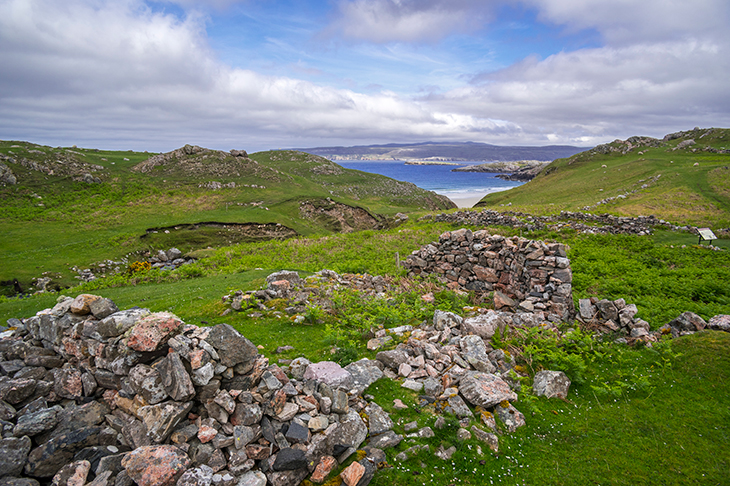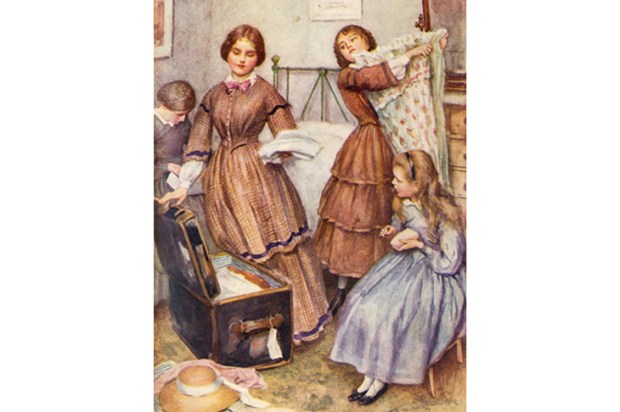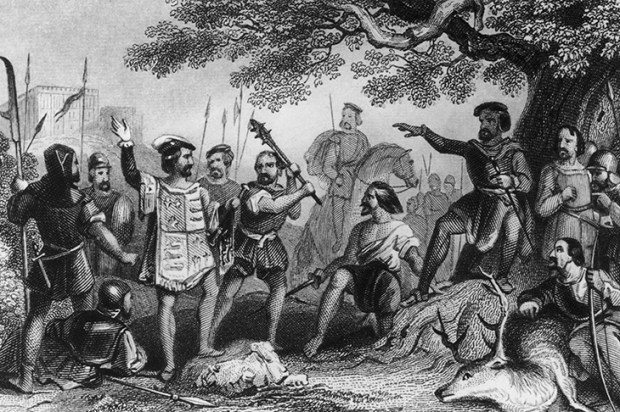There is a degree of irony in the opening chapter of T.M. Devine’s history, lambasting popular previous depictions of the Clearances and citing ludicrous comparisons to Nazi genocide and the misty-eyed melancholy of John Prebble. Though it does not mention such iconography as Thomas Faed’s painting ‘Last of the Clans’, used for the paperback of Prebble’s book, or Erskine Nicol’s ‘An Ejected Family’ in all its schmaltzy Victorian glory, such depictions are clearly the target. Yet the book itself is called The Scottish Clearances: A History of the Dispossessed and not, which would actually be more accurate, ‘Patterns of Land Ownership, Agricultural Change as well as Internal and External Migrations in Scotland, 1600–1900’. Not such a grabby title.
Devine, as a historian, is meticulous if not always enthralling. There is an air of the Harold Wilson era about this book. With white-hot research, lots of carefully calibrated tables and perhaps the occasional use of a slide rule and logarithm book, the Truth can be established. I may never need to know again that the average price for meal imported from the Clyde to the Outer Hebrides went from £2.2s per boll to 16s per boll between 1840 and 1880, or that the cattle herd in Sutherland, between 1790 and 1808, fell from 5,140 to 2,906 while sheep numbers rose from 7,840 to 21,000 (a suspiciously round number). Facts may be chiels that winna ding an downa be disputed, but interpretations of data certainly are. Yet buried under the statistical chest-puffing there is a lot to admire in this book.
For a start, there is closer attention paid to the south of Scotland as well as the Highlands. Whether the forms of expropriation of property are commensurate I will leave for the reader to decide: all I will say is that moving from a subsistence existence as a cottar to being a shoemaker in the local town is rather different from having your house burnt down and being forcibly deported to Nova Scotia. Conflating the two experiences seems to me to be rather ungenerous.
The sheer difference of the Lowlands and the Highlands is important. The clan structure, which was already fraying in the north, never took hold in the south, despite a similar degree of banditry and reiving. Scotland was not an integrated country even when England and Scotland were ruled by one crown. There is an important essay hidden in the book which contrasts the Irish experience in the 19th century with that of the Scots. The Irish took up arms, faced with both famine and ‘land reform’; while the Scots meekly took to the ships for shores a-yonder. Why should this be the case? Devine blames — or at least in part blames: as this is an academic book every contention is doubled with its opposite — Presbyterian deference and the clan ideal that the laird would look after his clan. There is a fascinating chapter on the rural unrest in the south-west of Scotland, which does link clearly to the ‘Killing Times’ of the 17th century and religious rebellion.
There are some notable myth-busting moments in this enquiry. For example, the population of the Highlands actually increased after the Clearances. The ruined stone cottages which accompany so many online sites about the period were a relatively late development, and it is likely, if you are into genealogy, that your Scottish ancestors came from Motherwell or Melrose rather than somewhere more romantic that has appeared in Outlander. In some cases the arguments have been made more eloquently and vociferously — in, for example, Neil Davidson’s avowedly Marxist The Origins of Scottish Nationhood, which like Devine’s latest work argues that raising 100 clansmen for a square go meant less than having 100 guineas to barter on the London gaming tables.
I did wonder at the cut-off date of 1900. Of course, by that date, Scotland had undergone the most rapid industrialisation in history, and farm workers were flocking to the cities. But not to continue the story into such issues as community land buy-outs or the creation of the New Towns — surely another form of nudged internal migration — leaves the story, such as it is, dangling. In short, I may pick this book up again to check a fact, but reading it from cover to cover is an unlikely proposition.
Got something to add? Join the discussion and comment below.
Get 10 issues for just $10
Subscribe to The Spectator Australia today for the next 10 magazine issues, plus full online access, for just $10.
You might disagree with half of it, but you’ll enjoy reading all of it. Try your first month for free, then just $2 a week for the remainder of your first year.














Comments
Don't miss out
Join the conversation with other Spectator Australia readers. Subscribe to leave a comment.
SUBSCRIBEAlready a subscriber? Log in